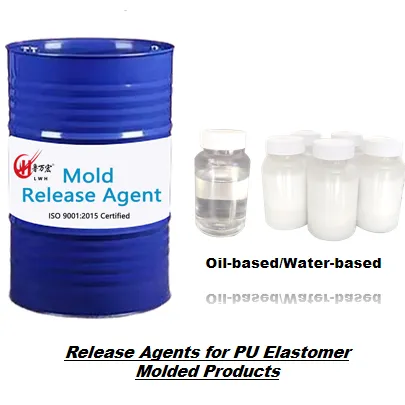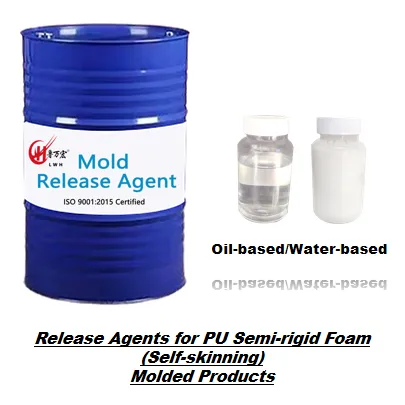การเข้าใจบทบาทสำคัญของตัวปล่อยในกระบวนการผลิตโฟมโพลียูรีเทน
อุตสาหกรรมการผลิตโฟมโพลียูรีเทนได้พัฒนาขึ้นอย่างมากในช่วงหลายทศวรรษที่ผ่านมา และสิ่งหนึ่งที่อยู่เบื้องหลังความสำเร็จนี้คือส่วนประกอบสำคัญที่มักถูกละเลย นั่นคือ ตัวปล่อย PU HR สารเคมีชนิดนี้มีบทบาทสำคัญยิ่งในการรับประกันความสำเร็จของรอบการผลิต การรักษามาตรฐานคุณภาพผลิตภัณฑ์ และการเพิ่มประสิทธิภาพการผลิต เมื่ออุตสาหกรรมต่างๆ ยังคงต้องการโฟมคุณภาพสูงขึ้นเรื่อยๆ ผลิตภัณฑ์ ความสำคัญของการเลือกและใช้ตัวปล่อยที่เหมาะสมจึงมีความสำคัญเพิ่มมากขึ้น
ตัวช่วยปล่อยทำหน้าที่เป็นแรงที่มองไม่เห็น ซึ่งช่วยให้สามารถถอดผลิตภัณฑ์โฟมโพลียูรีเทนออกจากรูปพิมพ์ได้อย่างสะอาดและมีประสิทธิภาพ หากไม่มีสารเฉพาะทางเหล่านี้ ผู้ผลิตจะประสบปัญหาอย่างมากในการผลิต เช่น ผลิตภัณฑ์เสียหาย รอบการผลิตที่เพิ่มขึ้น และค่าใช้จ่ายในการบำรุงรักษาที่สูงขึ้น การใช้ ตัวแทนปล่อย HR PU ได้กลายเป็นหัวใจสำคัญของเทคโนโลยีการผลิตโฟมในยุคปัจจุบัน
หลักวิทยาศาสตร์เบื้องหลังเทคโนโลยีตัวช่วยปล่อย PU HR
องค์ประกอบทางเคมีและการแสดงสมบัติ
สูตรส่วนผสมของตัวช่วยปล่อย PU HR ในปัจจุบันเป็นการผสมผสานสารเคมีหลายชนิดที่ซับซ้อน แต่ละชนิดมีหน้าที่เฉพาะเจาะจง ส่วนผสมหลักมักประกอบด้วยสารซิลิโคนพิเศษ เอเจนต์ลดแรงตึงผิว และตัวทำละลายพาหะ สารประกอบเหล่านี้ทำงานร่วมกันเพื่อสร้างชั้นฟิล์มบางระดับไมโครระหว่างพื้นผิวแม่พิมพ์กับโฟมโพลียูรีเทนที่กำลังขยายตัว
โครงสร้างโมเลกุลที่เป็นเอกลักษณ์ของตัวปล่อย PU HR ทำให้สามารถสร้างพันธะชั่วคราวที่มีเสถียรภาพกับผิวแม่พิมพ์ ในขณะเดียวกันก็ป้องกันไม่ให้โฟมยึดติดได้ การบรรลุสมดุลที่ละเอียดนี้เกิดขึ้นได้จากการสูตรผสมอย่างระมัดระวังและการควบคุมคุณภาพในระหว่างกระบวนการผลิต
ลักษณะสมรรถนะ
ตัวปล่อย PU HR คุณภาพสูงแสดงลักษณะประสิทธิภาพที่จำเป็นหลายประการ ซึ่งทำให้มันมีความสำคัญอย่างยิ่งต่อการผลิตโฟม ซึ่งรวมถึงคุณสมบัติในการปล่อยออกได้ดีเยี่ยม การสร้างฟิล์มอย่างสม่ำเสมอ และความทนทานภายใต้สภาวะการแปรรูปที่เปลี่ยนแปลงไป ตัวปล่อยจะต้องคงประสิทธิภาพไว้ได้ตลอดช่วงอุณหภูมิกว้าง และทนต่อสารเคมีโพลียูรีเทนที่มีฤทธิ์รุนแรง
สูตรขั้นสูงยังเพิ่มประโยชน์อื่นๆ เข้ามา เช่น คุณสมบัติต้านการกัดกร่อน การปกป้องอายุการใช้งานของแม่พิมพ์ให้ยาวนานขึ้น และคุณภาพผิวเรียบที่ดีขึ้นของผลิตภัณฑ์สำเร็จรูป คุณลักษณะเหล่านี้มีส่วนช่วยให้กระบวนการผลิตโดยรวมมีประสิทธิภาพและคุ้มค่ามากยิ่งขึ้น
การปรับปรุงกระบวนการผลิต
การปรับปรุงประสิทธิภาพการผลิต
การใช้สารหล่อลื่น PU HR โดยตรงมีผลกระทบต่อประสิทธิภาพการผลิตในหลายด้าน เมื่อเลือกและใช้งานอย่างเหมาะสม จะช่วยลดระยะเวลาไซเคิลได้อย่างมากโดยทำให้ผลิตภัณฑ์ปลดออกจากแม่พิมพ์ได้อย่างรวดเร็วและสะอาด ความมีประสิทธิภาพนี้ส่งผลให้ปริมาณการผลิตเพิ่มขึ้น และลดต้นทุนแรงงานที่เกี่ยวข้องกับการทำความสะอาดและการบำรุงรักษาแม่พิมพ์
นอกจากนี้ การใช้ ตัวแทนการปล่อย ที่มีคุณภาพสูงยังช่วยลดอัตราของเสียและความจำเป็นในการแก้ไขงาน ทำให้การดำเนินงานการผลิตมีความยั่งยืนและคุ้มค่ามากขึ้น ผู้ผลิตสามารถรักษาระบบการผลิตให้คงที่โดยไม่เกิดการหยุดชะงักอย่างไม่คาดคิดจากปัญหาการปลดผลิตภัณฑ์จากแม่พิมพ์
ประโยชน์ด้านการควบคุมคุณภาพ
การควบคุมคุณภาพในการผลิตโฟมขึ้นอยู่กับประสิทธิภาพของสารหล่อลื่นเป็นอย่างมาก สูตรสารหล่อลื่น PU HR ระดับพรีเมียมช่วยให้มั่นใจได้ถึงคุณภาพผิวเรียบที่สม่ำเสมอ ความแม่นยำของขนาด และความแข็งแรงทางโครงสร้างของผลิตภัณฑ์โฟม ความสามารถของสารหล่อลื่นในการให้การเคลือบอย่างทั่วถึงและคุณสมบัติการปลดออกที่เชื่อถือได้ มีส่วนช่วยในการรักษามาตรฐานคุณภาพสูงตลอดกระบวนการผลิต
นอกจากนี้ สารหล่อลื่นสมัยใหม่มักมีฟีเจอร์ที่ช่วยอำนวยความสะดวกในการตรวจสอบคุณภาพ เช่น รูปแบบการทาที่มองเห็นได้หรือสารติดตามเรืองแสงยูวี ฟีเจอร์เหล่านี้ช่วยให้ผู้ปฏิบัติงานสามารถรักษาระดับการทาที่เหมาะสมและมั่นใจได้ว่าแม่พิมพ์ถูกเคลือบทั่วถึงทุกพื้นที่

ความคิดเกี่ยวกับสิ่งแวดล้อมและความปลอดภัย
การผลิตอย่างยั่งยืน
การพัฒนาเทคโนโลยีตัวช่วยปล่อย PU HR มีแนวโน้มเน้นไปที่ความยั่งยืนด้านสิ่งแวดล้อมมากขึ้น สูตรใหม่ๆ ได้รับการออกแบบเพื่อลดการปล่อยสารอินทรีย์ระเหยง่าย (VOC) และลดผลกระทบต่อสิ่งแวดล้อม ผู้ผลิตจำนวนมากปัจจุบันนำเสนอทางเลือกที่ใช้น้ำเป็นฐาน ซึ่งยังคงประสิทธิภาพสูงไว้ได้ ในขณะเดียวกันก็สอดคล้องกับข้อกำหนดด้านสิ่งแวดล้อมที่เข้มงวด
ตัวช่วยปล่อยที่ยั่งยืนยังมีส่วนช่วยลดการเกิดของเสียจากการใช้งานที่มีประสิทธิภาพดีขึ้นและอายุการใช้งานที่ยาวนานขึ้น การสอดคล้องกับเป้าหมายด้านสิ่งแวดล้อมนี้ ช่วยให้ผู้ผลิตสามารถบรรลุเป้าหมายด้านความยั่งยืน พร้อมทั้งรักษาระดับการดำเนินงานที่มีประสิทธิภาพไว้ได้
การดำเนินการด้านความปลอดภัยในสถานที่ทำงาน
สูตรตัวช่วยปล่อย PU HR รุ่นใหม่ให้ความสำคัญกับความปลอดภัยในสถานที่ทำงานควบคู่ไปกับประสิทธิภาพ ผลิตภัณฑ์ขั้นสูงมีลักษณะเด่นเรื่องกลิ่นที่ลดลง คุณภาพอากาศที่ดีขึ้น และคุณสมบัติในการจัดการที่ปลอดภัยกว่า ผู้ผลิตลงทุนในการพัฒนาผลิตภัณฑ์ที่ปกป้องสุขภาพของคนงาน ขณะเดียวกันก็ให้ประสิทธิภาพการปล่อยที่เหมาะสมที่สุด
ข้อพิจารณาด้านความปลอดภัยครอบคลุมการจัดเก็บ การจัดการ และขั้นตอนการใช้งาน โดยผลิตภัณฑ์จำนวนมากในปัจจุบันมีความเสถียรที่ดีขึ้นและลดความสามารถในการติดไฟได้เมื่อเทียบกับสูตรดั้งเดิม การให้ความสำคัญกับความปลอดภัยช่วยให้บริษัทสามารถปฏิบัติตามข้อกำหนดด้านสุขภาพอาชีพ ขณะเดียวกันก็คุ้มครองแรงงานของตน
ผลกระทบทางเศรษฐกิจและการวิเคราะห์ต้นทุน
การประเมินผลตอบแทนจากการลงทุน
แม้ว่าสารหล่อลื่น PU HR ชนิดพรีเมียมอาจมีต้นทุนเริ่มต้นที่สูงกว่า แต่ประโยชน์ทางเศรษฐกิจในระยะยาวมักจะคุ้มค่ากับต้นทุนที่เพิ่มขึ้น การเพิ่มประสิทธิภาพการผลิต ความต้องการในการบำรุงรักษาน้อยลง และอัตราของเสียที่ลดลง ส่งผลให้ประหยัดต้นทุนอย่างมีนัยสำคัญในระยะเวลานาน ผู้ผลิตสามารถคำนวณผลตอบแทนที่จับต้องได้จากการลดเวลาหยุดทำงานและคุณภาพผลิตภัณฑ์ที่ดีขึ้น
ผลกระทบทางเศรษฐกิจไม่ได้จำกัดอยู่แค่ต้นทุนวัสดุโดยตรง แต่ยังรวมถึงการประหยัดด้านแรงงาน การใช้พลังงาน และการบำรุงรักษาอุปกรณ์ ประโยชน์สะสมเหล่านี้ทำให้สารหล่อลื่นคุณภาพสูงกลายเป็นการลงทุนเชิงกลยุทธ์เพื่อความเป็นเลิศในการดำเนินงาน
ประโยชน์ด้านต้นทุนในระยะยาว
การดำเนินการเชิงกลยุทธ์โดยใช้สารหล่อลื่นที่มีสมรรถนะสูงช่วยสร้างประโยชน์ด้านต้นทุนในระยะยาวอย่างมาก การยืดอายุการใช้งานแม่พิมพ์ ลดความจำเป็นในการทำความสะอาด และปรับปรุงความสม่ำเสมอในการผลิต ล้วนช่วยให้ต้นทุนการดำเนินงานต่ำลง นอกจากนี้ การลดปัญหาที่เกี่ยวข้องกับคุณภาพและการส่งคืนสินค้าจากลูกค้า ยังช่วยให้การดำเนินงานมีกำไรอย่างต่อเนื่อง
บริษัทที่ลงทุนในสารหล่อลื่น PU HR ระดับพรีเมียม มักได้รับข้อได้เปรียบในการแข่งขันที่เพิ่มขึ้นจากการปรับปรุงคุณภาพผลิตภัณฑ์และลดต้นทุนการผลิต ซึ่งทำให้สามารถรักษาตำแหน่งผู้นำตลาดไว้ได้
คำถามที่พบบ่อย
ควรทาสารหล่อลื่น PU HR บ่อยเพียงใดในระหว่างกระบวนการผลิต?
ความถี่ในการทาขึ้นอยู่กับหลายปัจจัย เช่น ปริมาณการผลิต ความซับซ้อนของแม่พิมพ์ และสภาพการทำงาน โดยทั่วไปจำเป็นต้องทากลับใหม่ทุกๆ 3-5 รอบ แม้ว่าสูตรขั้นสูงบางชนิดอาจยืดช่วงเวลานี้ออกไปได้ถึง 10 รอบหรือมากกว่านั้น การตรวจสอบและปรับความถี่ในการทาอย่างสม่ำเสมอจะช่วยให้มั่นใจถึงประสิทธิภาพสูงสุด
สัญญาณของการล้มเหลวของตัวช่วยปลดแม่พิมพ์หรือการใช้งานที่ไม่เพียงพอคืออะไร
ตัวบ่งชี้ทั่วไป ได้แก่ ปัญหาในการปลดผลิตภัณฑ์ ข้อบกพร่องบนผิวของผลิตภัณฑ์สำเร็จรูป และการสะสมของสารบนพื้นผิวแม่พิมพ์ การตรวจจับสัญญาณเหล่านี้แต่เนิ่นๆ จะช่วยให้สามารถดำเนินการแก้ไขได้ทันท่วงที ป้องกันการหยุดชะงักของการผลิตและปัญหาด้านคุณภาพ
ตัวช่วยปลดชนิด PU HR สามารถส่งผลต่อคุณสมบัติของโฟมขั้นสุดท้ายได้หรือไม่
ถึงแม้ว่าตัวช่วยปลดที่ใช้อย่างเหมาะสมจะไม่ส่งผลกระทบอย่างมีนัยสำคัญต่อคุณสมบัติของโฟม แต่การใช้ในปริมาณมากเกินไปหรือใช้ผิดวิธีอาจส่งผลต่อผิวสัมผัส และอาจมีผลต่อคุณสมบัติการยึดติดได้ การใช้วิธีการและปริมาณตามที่แนะนำจะช่วยให้ได้ผลลัพธ์ที่ดีที่สุด โดยไม่กระทบต่อคุณภาพของผลิตภัณฑ์

